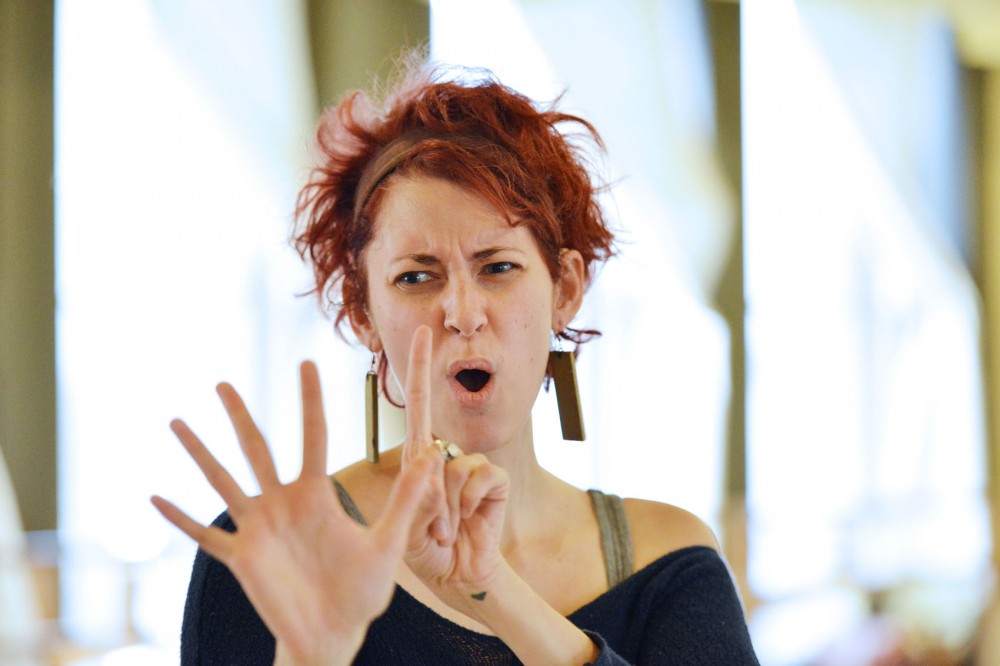What: “Silence”
Where: Rarig Center, Proscenium stage
When: 10 p.m., Aug. 3; 4 p.m., Aug. 5; 8:30 p.m., Aug 9; 5:30 p.m., Aug. 10; 10 p.m., Aug. 11
Unsurprisingly, it’s tough for the deaf to enjoy live theater. Some venues have captioning screens, or broadcast audio to hearing aids, but usually there is just an interpreter or two at the lip of the stage, translating the dialogue into sign language. Deaf audience members have to split their attention between the action on stage and the interpreters in front. This can make it tough to follow the story, and some of the meaning can be lost in translation.
University of Minnesota senior Jay’d Hagberg hopes to make theater more accessible with “Silence,” his deaf-friendly musical for the Fringe Festival. “Silence” uses roughly half deaf and half hearing actors to create a production that is equally enjoyable to both audiences.
Each character is partnered with a shadow character that follows them around on stage. If a character is deaf, their shadow speaks and sings everything that the character signs. For hearing characters, the shadow signs along with their speech or singing.

“It’s kind of like there are two shows going on at the same time,” said Hagberg, who wrote, directed and composed the music for “Silence.” “There’s the deaf production, and there’s the hearing production, but they’re happening over the top of each other.”
Much like his show, Hagberg occupies two worlds. He is a senior at the University School of Music; Hagberg is also legally deaf. He has about 30 percent of his hearing, just enough to carry on a conversation with his hearing aids in.
Hagberg based “Silence” on his own experiences as a deaf musician, as well as the experiences of his friend Canae Weiss, a deaf dancer and former University student. Weiss plays Abby, a deaf dancer who falls in love with a hearing musician.
“We understand each other because we’re both right in the middle of the hearing and deaf communities,” Weiss said through Hagberg, who interpreted during the interview.
“Silence” uses many professional interpreters to shadow the lead characters. Cassie Lang was an American Sign Language interpreter at the University and many area theaters. She plays Weiss’ long-time interpreter in the show.
The transition from the front of the stage to onstage was natural for Lang and the other interpreters. To translate live theater for a deaf audience, a background in performance is essential.
“You really need people who have theater backgrounds,” Lang said. “You really need someone who can become the characters.”
The cast of “Silence” has deaf actors who don’t understand spoken English, hearing actors who can’t sign, native signers who know English and English-speakers with a little ASL experience. Often the professional interpreters pull double duty at rehearsals, practicing their own acting while making sure everyone is on the same page.
“When I’m interpreting for end notes after the show is over, information isn’t really sticking in my head,” Lang said. “It’s in one ear and out of the hands, it’s just gone.”
Blocking the show so that all of the signers were visible to the whole audience was another challenge, as was syncing up spoken and signed dialogue.
“With English and ASL, the vernaculars don’t match,” Hagberg said. “It’s really hard to convey what you’re talking about in two completely different languages.”
Performances had to be adjusted to make sure that important lines were reaching both hearing and deaf audience members simultaneously, he said.
When all of the moving parts and both languages come together on stage, the precision is mesmerizing. In fact, “Silence” contains so many realistic nuances of life for the deaf that some parts might be lost on the hearing.















